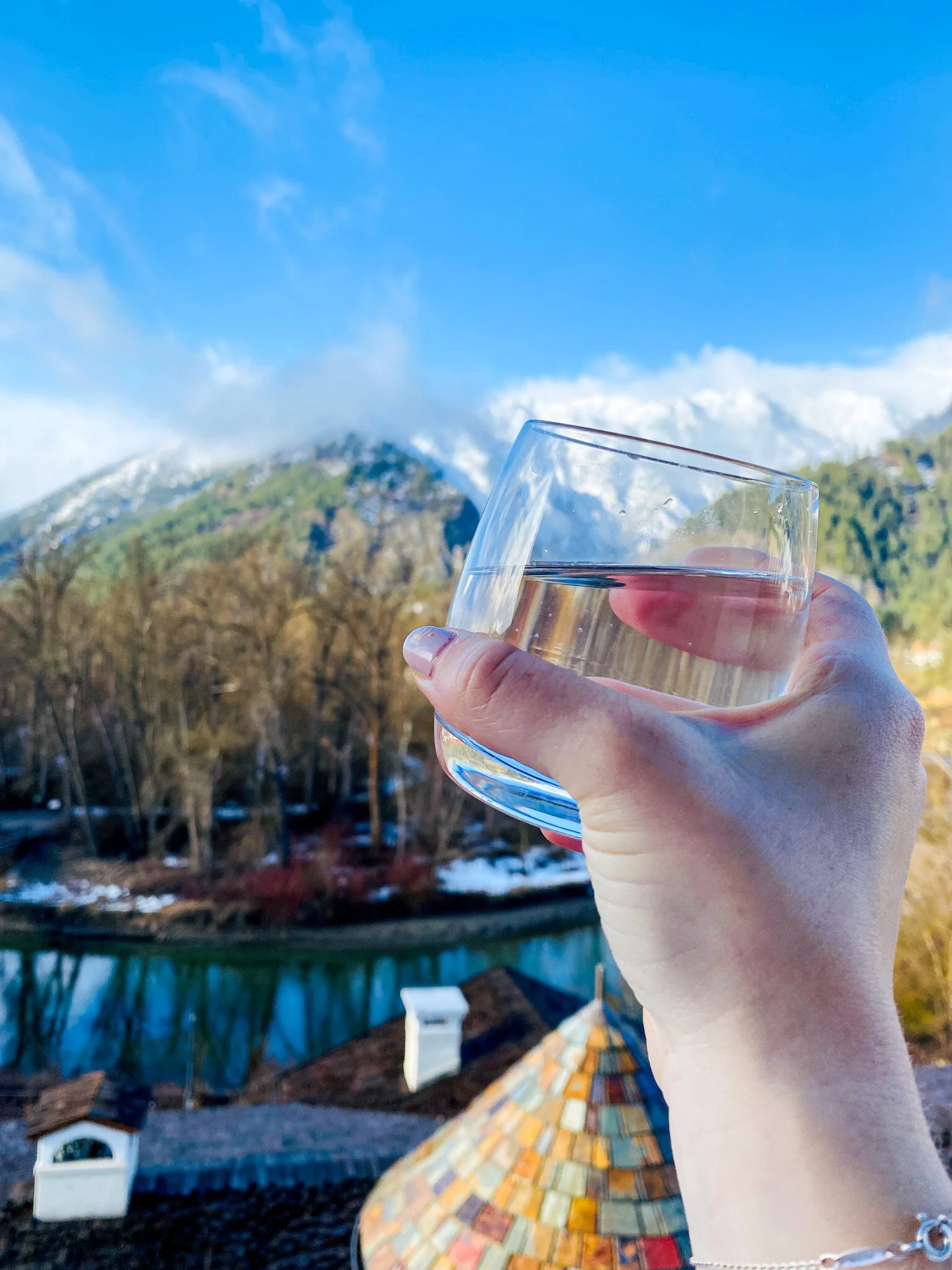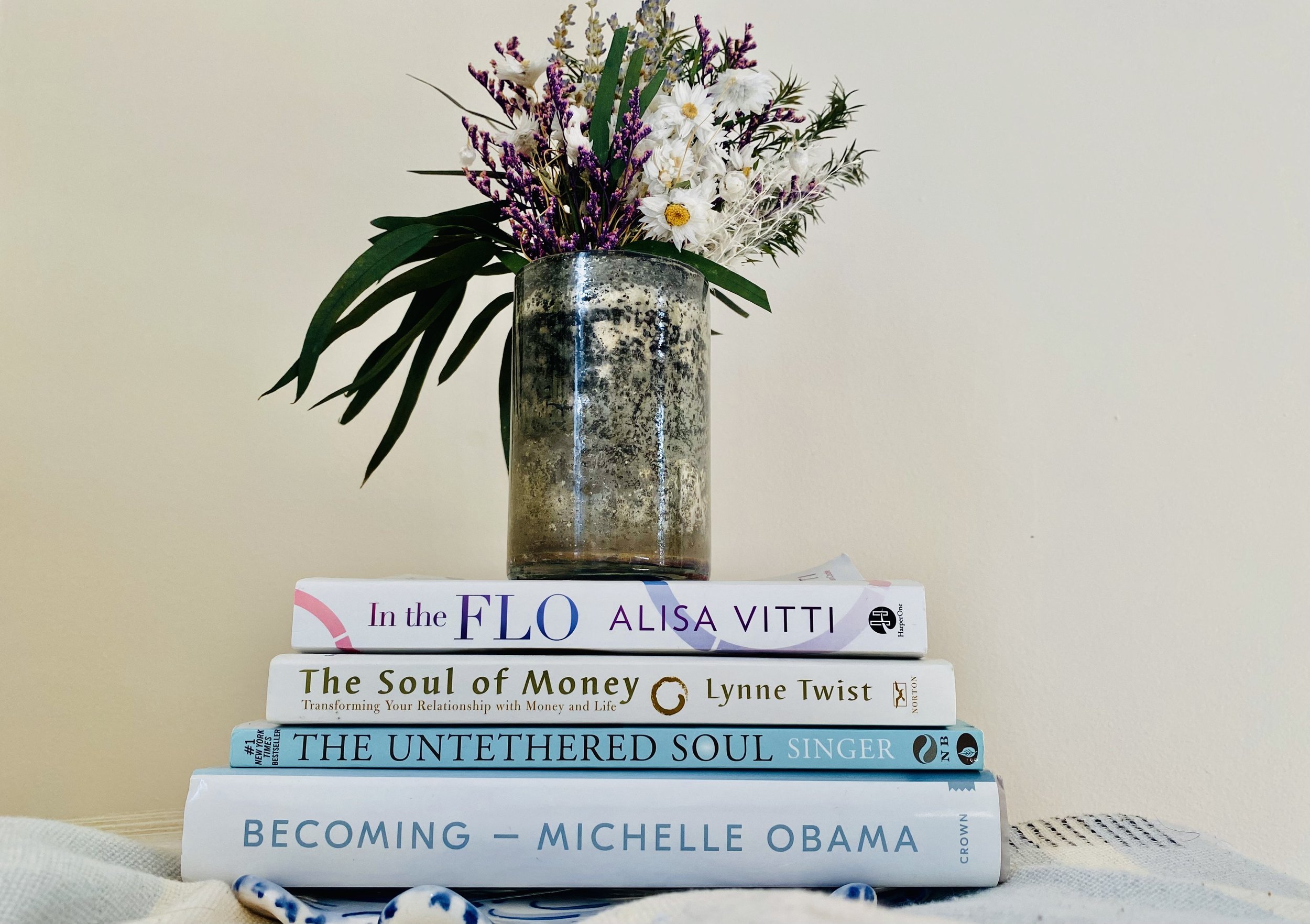Why You Need to Change Your Hydration Game and How to Do It
Hydration. It often brings to mind enormous water bottles, and for me at least, really having to pee. But, it turns out -we’ve been hydrating all wrong. That’s right - that half your weight in ounces rule you’ve been following is pretty useless. What if I were to tell you there’s a better way to hydrate? A way that will leave you feeling energized, reduce pain, and help your body to regulate better.
Quench by Dana Cohen and Gina Bria is a guide that challenges our conception of what hydration means and delivers advice that will truly help your body feel hydrated. Dana Cohen is a doctor in New York City who sought a more holistic path when she learned that proper hydration for her patients was a game changing prescription. Gina Bria is an anthropologist and founder of the Hydration Foundation who studies how remote tribes in deserts and places without a lot of water access stay hydrated. Together, their book provides actionable steps to be able to better achieve hydration.
Three big takeaways from the book have really changed my view on hydration. First, in order for our bodies to stay hydrated we must move throughout the day. Moving helps the body move water into our fascia which is essentially netting in our body that delivers hydration where we need it most. Second, the water in our body is not the H20 we normally drink - it’s more gel-like and mimics the water found in plants, fruits, and vegetables more than our typical glass we keep by our bed. Most importantly though, hydration should be thought of in everything we do- what hydrates? what dehydrates? how do we replenish? Luckily, it’s pretty easy to do.
The Quench plan is pretty simple and if you buy the book you will get an entire packet that shows you exactly how to do this. If you want to get started, here are the basics that will help you beat fatigue, reduce chronic illness, and feel truly hydrated.
How To Hydrate Properly
1. Supercharge Your Hydration
Salt is often avoided at all costs - but what kind of salt we have and how we consume it can make a big difference in whether its consumption is to our benefit or detriment. Our body needs sodium. That’s why if you are dehydrated and need an IV, the bag has sodium in it. Sodium helps the body keep fluids in a normal balance . It plays a key role in normal nerve and muscle function and is an essential electrolyte for the body. Lemon provides your body with a low sugar dose of potassium, vitamin C and B and helps to improve digestion and eliminate waste.
When you wake up in the morning, drinking 16 ounces of water with a pinch of high quality salt (Keltic, sea, pink himalayan, etc.) and a half a lemon squeeze can help your body to rapidly rehydrate. I like this salt for cooking with and for drinking.
During the day, pair your water with plant fiber such as an apple with a sprinkle of chia seeds which will help the body to better absorb the water.
At the end of the day, you can either have the lemon water again or try a caffeine free tea which will hydrate with some added benefits.
2. Eat Your Water
Plan old H20 is a good start but our body needs the appropriate electrolytes and minerals to truly replenish and hydrate. H302 is the “structured water” that is in our body and it behaves differently than it’s sister H20. It’s more viscous, dense, and alkaline than regular water; has a negative charge, and can hold energy, much like a battery, and deliver energy too. Turns out - fruits and vegetables have the same exact type of water so when we eat them our body has to process less. They also contain a ton of nutrients our typical H20 doesn’t have. Try to incorporate some of the most hydrating fruits and veggies into your diet every day. They are:
Fruit: Starfruit, watermelon, strawberries, grapefruit, cantaloupe, pineapple, raspberries, blueberries, kiwi, apples, pears, and grapes
Vegetables: Cucumbers, romaine lettuce, celery, radishes, zucchini, tomatoes, peppers, cauliflower, spinach, broccoli, carrots, and sprouts
3. Move Water Throughout the Body
When we don’t move enough our bodies aren’t able to move water appropriately throughout our body. Don’t worry - this isn’t me telling you to hit the gym harder or go on a new workout plan. In fact, it’s micromovements - small movements in the morning, at night, and throughout the day that will help you to ensure your body is properly hydrated. Why do this?
It hydrates your fascia. Fascia is a type of connective tissue that extends into almost every corner of the body and is responsible for holding it all together. It is a spider web-like scaffolding that surrounds every organ, tendon, ligament, muscle and muscle cell and it brings water to every area. So we have to help it to do so.
Here are a few simple movements that will help you:
AM Micromovements: When you wake up move your chin to your chest a few times, gently press your right shoulder into the mattress, then your left, and repeat a few times. Move your chin in a figure 8 motion, then reverse and try it with your nose a few times as well. This whole process should be about 2 minutes.
During the day Micromovements: Swirl your ankles several times and do spinal twists both ways 3-4 times. Do some seated cat/cow and release. Try to do this a few times a day on a bathroom break, a walk, or at your desk.
PM Micromovements: Move your head so your ear meets your shoulder and then go in the other direction a few times. Do those figure 8s with your chin again and stretch your entire body head to toe. This should take not more than 2 minutes.
4. Smoothies Are Your Friend
Smoothies are an incredible way to get better hydrated and if you don’t love them cold (like me) there are warm options as well. Smoothies combine many high-hydration fruits, vegetables, and plants and pre-breaks them down so our body is immediately hydrated with very little processing needed. Having one smoothie a day is recommended but this isn’t a juice cleanse- eat as normal just add these into your routine. If you use the fruit and vegetable suggestions above the pairing are really endless. Here are two options - one warm, one cold:
Watermelon-Cucumber Splash (Cold): 1 cup watermelon, 1 medium cucumber, squeeze of lime juice, pinch of high quality salt, mint leaves (optional), 1-2 cups filtered water - blend and serve.
Apple Cider-Orange Sour (Warm): 1 cup hot water, juice of 1 orange, 1/2 teaspoon raw apple cider vinegar, 1/4 teaspoon powdered ginger- blend and serve.
To create your own concoction that is extra hydrating, make sure it includes one or more leafy greens and/or herbs (98 percent structured water); a bit of fruit for sweetness; a healthy fat, like avocado, olive, or other good oils, or nuts and seeds; an acidic zing from lime juice or raw apple cider vinegar; and a final pinch of coarse sea salt.
5. Know Your Environment
Modern day life, it turns out, is incredibly dehydrating. Typical office space? Dehydrating. Your car commute? Dehydrating? Your Instagram habit? Mega dehydrating. This can feel utterly depressing at first but remember that you have all the above tools to give your body the proper hydration. In addition to these tools - consider:
A desk humidifier for your office which can help moisten nasal passages and give you a needed dose of external hydration.
Aloe oil for travel which contains antibacterial properties and is majorly hydrating - put some on your hands and under your nose. Nasya oil for the nose is another great option.
A essential oil diffuser for your home which can help to keep the room moist while also providing the benefits of plant oils to your body.
Try these changes for 5 days and see how you feel. If you have any questions or want to let me know how it went for you please comment below or connect with me through Instagram!











































Health coach, meditation teacher, reiki master and woman on a mission to help you live life on your terms.
Read More